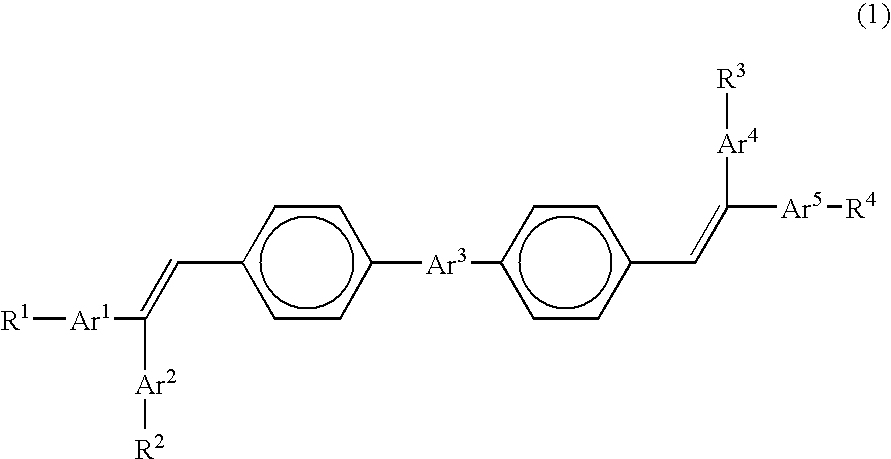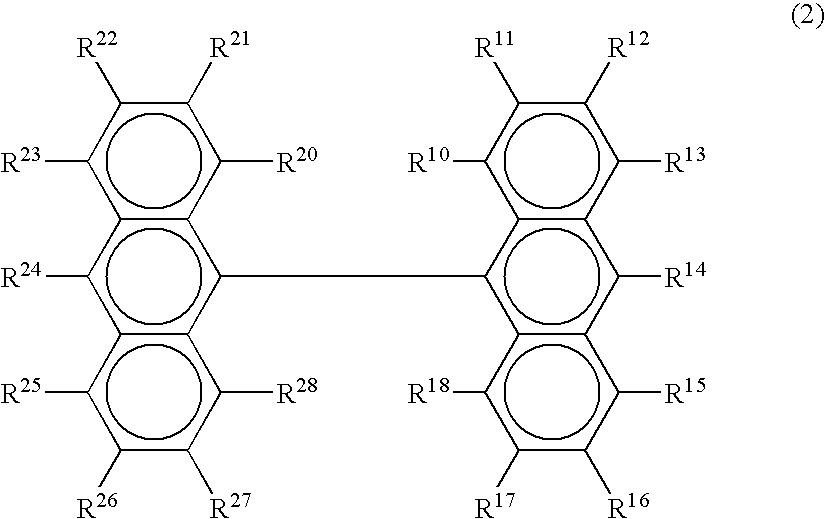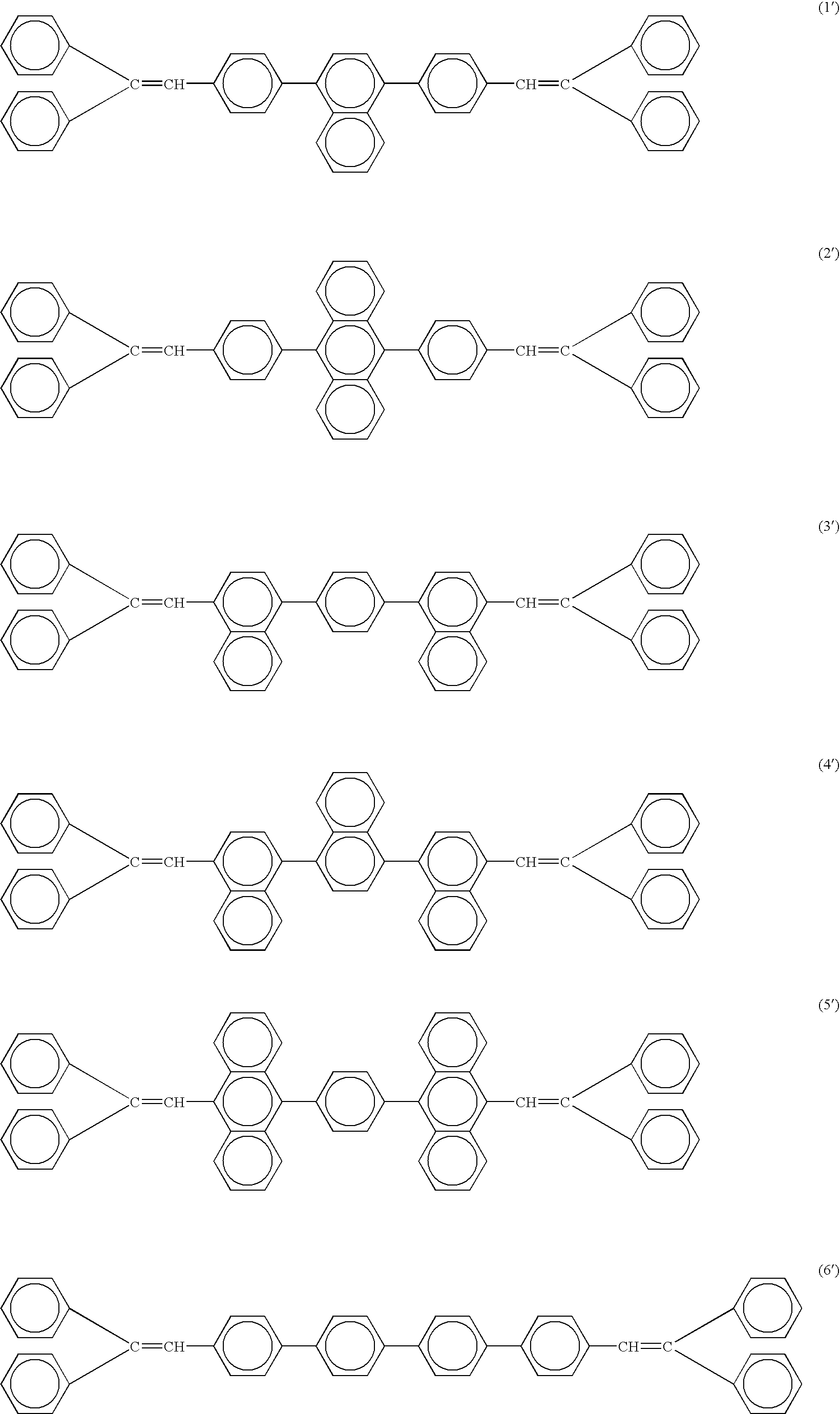Organic electroluminescence device
- Summary
- Abstract
- Description
- Claims
- Application Information
AI Technical Summary
Benefits of technology
Problems solved by technology
Method used
Image
Examples
synthesis example 1
[0078] Into a flask, 1.0 g of trimethoxygallium and 40 ml of anhydrous ethanol were placed and stirred. To the resultant solution, 0.84 g of 4-hydroxybiphenyl was added and the obtained mixture was stirred at 80° C. for 7 hours. Major portions of the solid substance separated as precipitates were dissolved into a hot ethanol and the resultant solution was filtered. The obtained filtrate was concentrated and the resultant concentrate was dried in vacuo to obtain 1.5 g of a yellowish white powder. The yellowish white powder was analyzed in accordance with the mass analysis and found to be gallium chelate compound (28) shown above. The energy gap was measured from absorption end of the light absorption spectrum and found to be 2.95 eV.
synthesis example 2
[0079] The same procedures as those conducted in Synthesis Example 1 were conducted except that 0.59 g of 4-cyanophenol was used in place of 0.84 g of 4-hydroxybiphenyl and 1.4 g of a yellowish white powder was obtained. The yellowish white powder was analyzed in accordance with the mass analysis and found to be gallium chelate compound (17) shown above. The energy gap was measured from absorption end of the light absorption spectrum and found to be 2.96 eV.
synthesis example 3
[0080] The same procedures as those conducted in Synthesis Example 1 were conducted except that 0.47 g of phenol was used in place of 0.84 g of 4-hydroxybiphenyl and 1.3 g of a yellowish white powder was obtained. The yellowish white powder was analyzed in accordance with the mass analysis and found to be gallium chelate compound (27) shown above. The energy gap was measured from absorption end of the light absorption spectrum and found to be 2.93 eV.
[0081] The chemical structures of the compounds used in Examples and Comparative Examples are shown in the following. The ionization energy and the electron affinity of these compounds are shown in Table 1.
TABLE 1D1D2D3D4D5C1C2C3E1E2E3CompoundIonization energy (eV)Electron affinity (eV)(E1)5.702.80(E2)5.722.73(E3)5.802.79(D1)5.352.45(D2)5.412.53(D3)5.392.51(D4)5.372.56(D5)5.232.65(C1)5.622.89(C2)5.753.25(C3)5.522.78
[0082] The ionization energy (Ip) was measured by using an atmospheric photoelectronic spectrophotometer AC1 manufacture...
PUM
| Property | Measurement | Unit |
|---|---|---|
| Energy | aaaaa | aaaaa |
| Energy gap | aaaaa | aaaaa |
| Energy | aaaaa | aaaaa |
Abstract
Description
Claims
Application Information
 Login to View More
Login to View More - R&D
- Intellectual Property
- Life Sciences
- Materials
- Tech Scout
- Unparalleled Data Quality
- Higher Quality Content
- 60% Fewer Hallucinations
Browse by: Latest US Patents, China's latest patents, Technical Efficacy Thesaurus, Application Domain, Technology Topic, Popular Technical Reports.
© 2025 PatSnap. All rights reserved.Legal|Privacy policy|Modern Slavery Act Transparency Statement|Sitemap|About US| Contact US: help@patsnap.com



